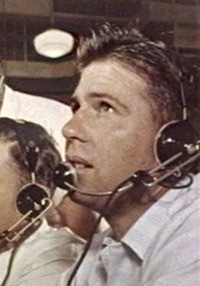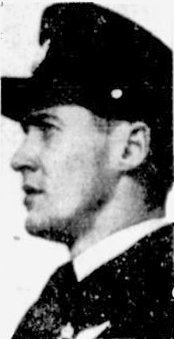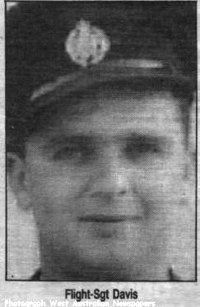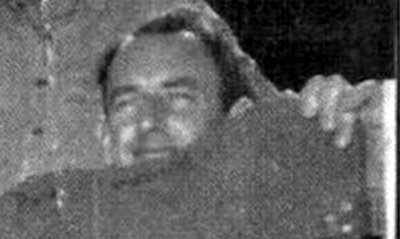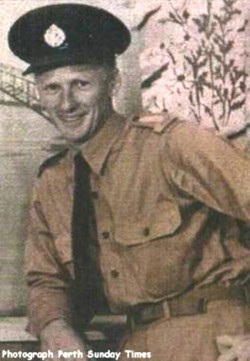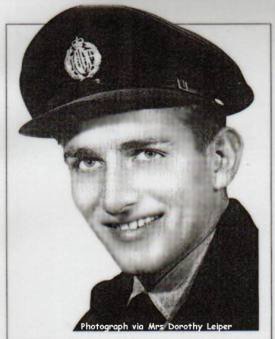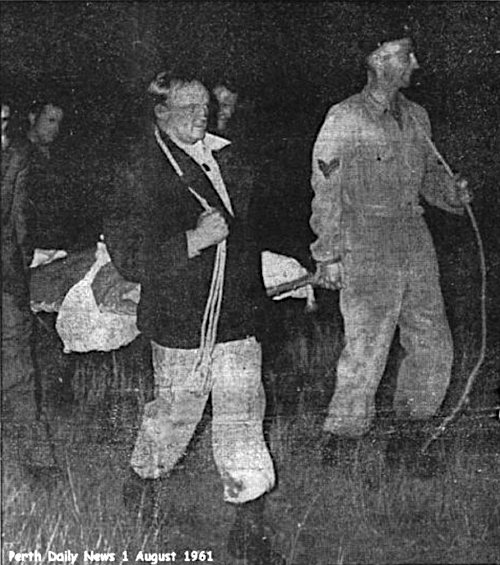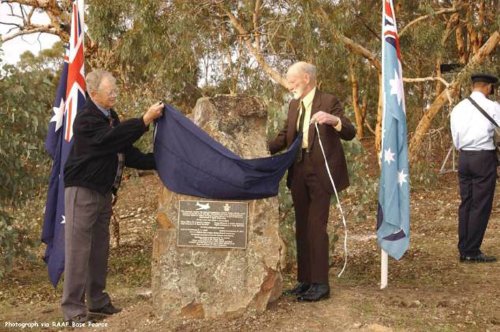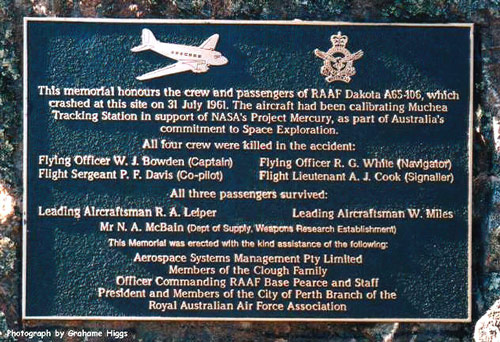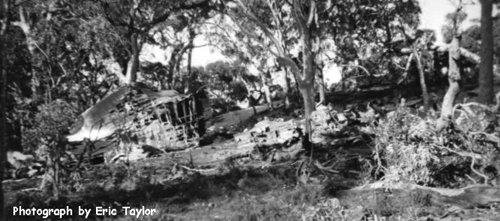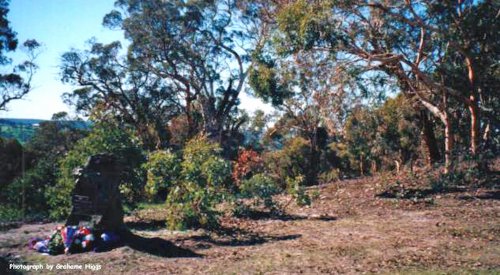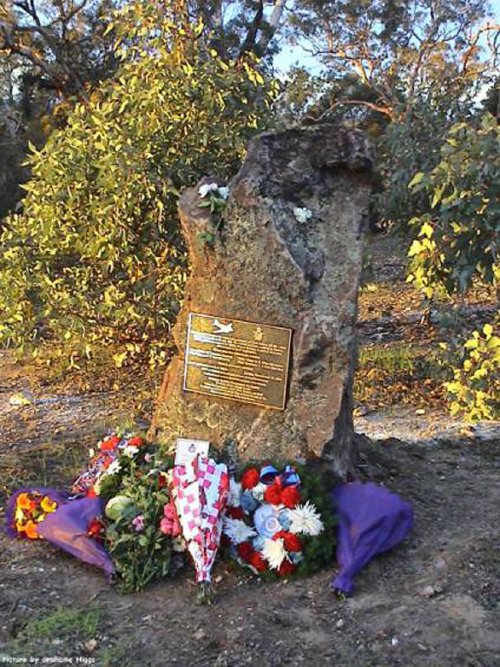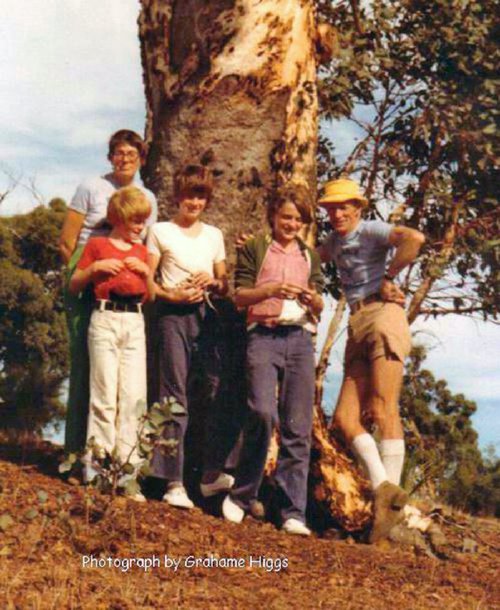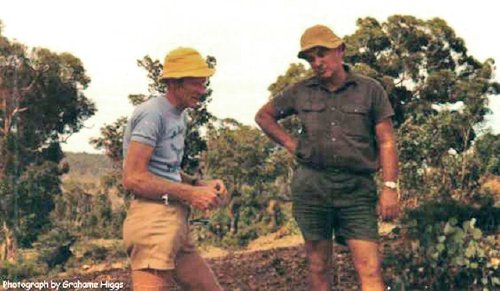31st July 1961
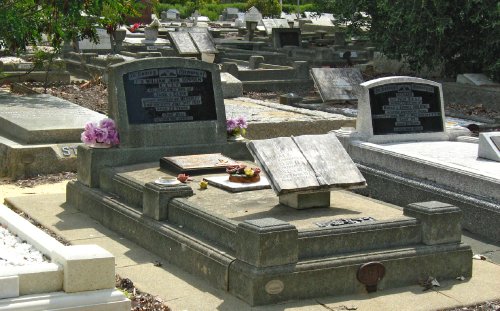 |
This grave in a Perth cemetery is a silent reminder of the tragedy which struck
the Australian support for Project Mercury, at 7:05pm on 31st July 1961.
Photo: Andrew Todd. |
On the evening of Monday 31st July 1961, four Australians died in a tragic accident approximately 35km north east of Perth.
They were part of a simulation team calibrating the Mercury Tracking Stations at Muchea and Woomera and had spent the day flying their C47 Dakota in a pattern around the Muchea station.
Shortly after leaving RAAF Pearce en route to base at Edinburgh, South Australia, they clipped trees in the nearby Darling Ranges, and crashed.
Killed
Flying Officer William John Bowden, 23, single, Pilot, from Tuart Hill, W.A.
Flight-Sergeant Peter Frederick Davis, 26, Co-pilot, from Elizabeth, S.A.
Flying Officer R.G. White, Navigator, from Petersham, NSW.
Flight-Lieutenant A.J. Cook, 37, married, Signaller, from North Glenelg, S.A.
Injured
Leading Aircraftman William Miles, Engine fitter, from Nedlands, W.A.
Aircraftman Robert Leiper, Fitter, from Nedlands, W.A.
Mr. Neil McBain, Department of Supply, from Somerton Park, Adelaide, S.A. |
The C47 Dakota had been fitted out with Mercury capsule equipment supplied by NASA. The purpose was to simulate a Mercury spacecraft crossing the sky, so that tracking station equipment and procedures could be tested prior to an actual space mission.
George Harris, from the Goddard Space Flight Center, oversaw the installation as well as the training of the aircraft crew and station personnel. He was accompanied by Bendix Radio engineer Danny Dalton. RAAF Flight Officer Bob Dunnett was the Tech leader.
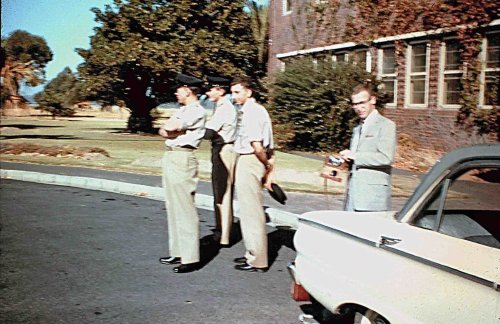 |
Three of the Dakota flight crew outside the Officers Mess at RAAF Base Pearce. On the right is Bendix Radio engineer Danny Dalton.
Photo: George Harris. With thanks to Grahame Higgs for the site ID.
(Co-ordinates -31.662726075705525, 116.02319158093272.) |
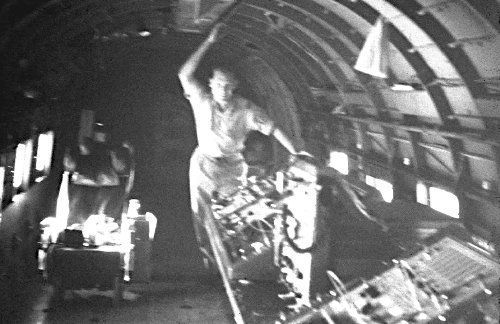 |
Flight Officer Bob Dunnett in the Dakota with the Mercury capsule equipment.
Photo: George Harris. |
Our thanks go to Grahame Higgs at ADF-Serials for permission to share below his research on the sad loss of C47 Dakota A65-106.
Text and photos, unless otherwise credited, are courtesy Grahame Higgs.
[Additional information added by Colin Mackellar is in square brackets.]
 |
The C47 Dakota at RAAF Edinburgh shortly before her loss in July 1961.
Photo via Bill Miles. |
C47B constructors number 33290, A65-106 was delivered to the RAAF in May 1945 and spent time with 37 Squadron, ARDU and 2ATU. Another of the RAAF’s venerable C47 fleet, alas she was destined to end her career prematurely, at 7:05pm on 31st July 1961, on a rainy hill top in Western Australia.
The aircraft and crew had been travelling to a number of locations around Australia on a task for NASA, and were in WA calibrating the Muchea Tracking Station in support of a Project Mercury space launch. They had intended to leave for home base, RAAF Edinburgh in South Australia, earlier in the day, however the calibration had been delayed due to technical difficulties at Muchea.
A65-106 finally departed Pearce off Runway 18 (to the South) after dusk and in passing rain showers.
Leading Aircraftsman (later Warrant Officer) Bill Miles survived the crash and remembers well, events of that fateful evening. He had been seated in the very rear of the aircraft reading the Rigby Cartoon in his evening newspaper. Being responsible for the maintenance of the aircraft, he was wondering where the water dripping on him was coming from and why he was only holding fragments of his paper. He found he was sitting upright in his seat in the bush relatively unscathed surrounded by burning aircraft wreckage. To his surprise, he found that there were two other passengers, a civilian, Neil McBain and another airman Leading Aircraftsman (LAC) Tony Leiper, in front of him in the bush, also comparatively uninjured, also still sitting in their seats.
Miles and Leiper went back into the burning remains of the rear cockpit area and were able to rescue the injured Navigator, Flying Officer (FLGOFF) Bob White and Signaller, Flight Lieutenant (FLTLT) John Cook whom they sheltered from the rain under an inflated emergency dinghy.
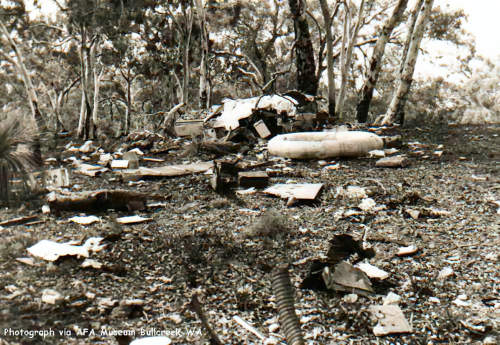 |
Taken not long after the accident, this photo clearly shows the inflated dinghy that Bill Miles and Tony Leiper used to shelter the injured crew. |
Miles and Leiper tried several times to gain access to what remained of the fiercely burning forward cockpit.
Unfortunately they were not able to assist the two pilots, FLGOFF Bill Bowden and Flight Sergeant (FSGT) Peter Davis, both of whom had died on impact.
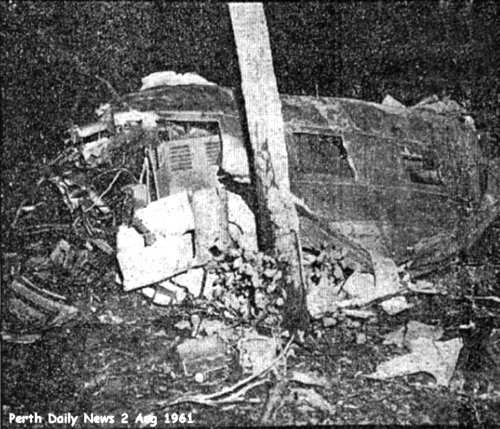 |
On the left of this picture, precious little remained of the cockpit or of anything caught in the fire, fed by full fuel tanks. |
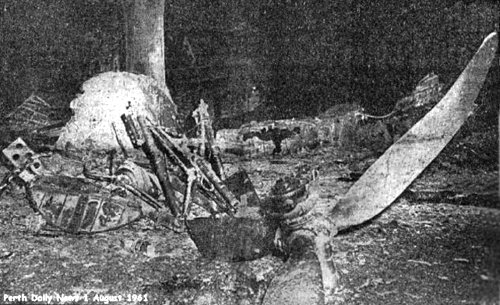 |
One of the propellers. |
Although the Air Traffic Control officer on duty raised the alarm promptly, due to the weather and difficult terrain, some hours passed before the rescue party were able to reach the scene. Tragically, and despite Bill Miles and Tony Leiper’s best efforts, both John Cook and Bob White died from their injuries shortly after the arrival of medical assistance.
[ A Perth-bound Ansett - ANA DC-6B from Adelaide was diverted to the crash area, and the crew reported seeing the tail portion of the C47 still burning. – The Sydney Morning Herald, 1st August 1961, page 1.
Steep hills and thick mud hampered the rescue effort. From The Sydney Morning Herald, 2nd August 1961, page 12 –
“Mud up to a foot deep stopped four-wheel drive vehicles used by the rescuers.
A farmer tried to help with a tractor, but it became bogged also.
Gullies at the base of the hill were impassable to vehicles, and the rescuers reached the wrecked plane on foot.
Six men carried each of the stretchers on which the survivors were taken down the steep hillside.
The survivors are now in hospital at Pearce base.”
From The Age, 2nd August 1961 –
“Although the crash was known at 7.25 p.m. it was not until five hours later that the first survivor was removed from the wreckage and brought to Pearce…
A farmer who guided the first party to the wreck said the aircraft went up in a ball of flame when it hit the hillside, lighting up the valley below…
The search started soon after the crash was reported and off-duty men from the base fanned out in their own cars through the hills trying to find the wreckage. More than 40 R.A.A.F. men took part in the search and a party stayed throughout the night guarding the wreckage.” ]
|
Flight Sergeant Peter Davis. |
|
Flying Officer Bob White.
(Photo: Sydney Morning Herald, 02 August 1961.) |
|
Flight Lieutenant John Cook.
(Click image for wider picture.) Photo via Allan Stewart. |
|
Leading Aircraftman Bill Miles (survived). |
|
Leading Aircraftman Tony Leiper (survived). |
|
A survivor is evacuated many hours after the crash, such was the difficult terrain and weather conditions. |
The crash of this aircraft was an historic event, for here, we lost four Australians in our commitment to manned space travel. The loss of these crewmembers is as significant to Australian aviation history as was the loss to the USA, of the three astronauts in the Apollo 1 Capsule fire in January 1967.
Karrakatta Cemetery, Perth, Western Australia.
 |
Flight Officer William John Bowden, aged 23.
(Grave: Anglican WD 0261.)
Photo: Andrew Todd, December 2011. |
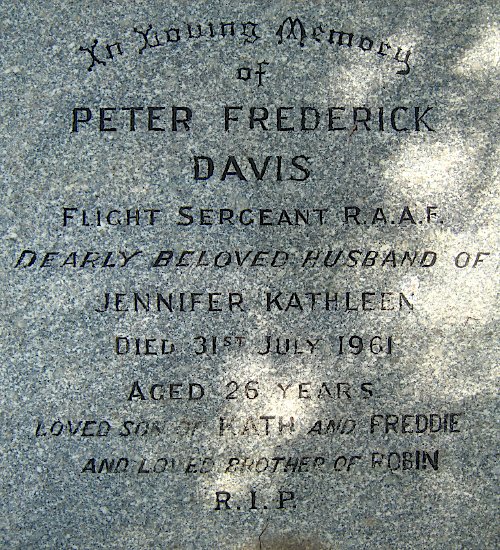 |
Flight Sergeant Peter Frederick Davis, aged 26.
(Grave: Roman Catholic MA 0435.)
Photo: Andrew Todd, December 2011. |
On Sunday the 16th of June 2002, a Service of Dedication was held at the Crash Site, four miles SE of RAAF Pearce.
Two of the survivors, Neil McBain and Bill Miles, unveiled a Memorial Plaque in the presence of the friends and relatives of those whose lives had been taken or touched by this accident.
|
Survivors Neil McBain (L) and Bill Miles (R) unveil the Memorial to Dakota A65-106.
Photo: RAAF Pearce. |
|
The Plaque. Photo: Grahame Higgs. |
Even now, more than forty years later, the damage caused by the conflagration is starkly evident. Yet, in a strange contrast that belies the violence of the moment, the site is hauntingly peaceful with the unique and classic beauty of the Australian bush.
|
The crash site – photo taken the following afternoon.
Photo: Eric Taylor. |
|
The same location in 2001, looking in the direction of flight and showing how close the aircraft came to clearing the hilltop.
Photo: Grahame Higgs. |
The crash site is on private property in a particularly beautiful part of Bullsbrook/Chittering. The property owners, aware of the historic importance of this event, have graciously undertaken to ensure that the area will continue to remain a tranquil sanctuary, sacred to the memory of Australia’s own space pioneers.
|
Each year the Perth Branch of the Air Force Association conducts a Remembrance Service on or close to the anniversary of the crash of C47 Dakota A65-106.
Photo: Grahame Higgs. |
 |
| This August 1995 story by Torrance Mendez, recounts how flowers and tributes left at the graves in Karrakatta Cemetery remember the loss. (Scan: Jack Duperouzel.) |
In researching this story, and while I was organising the Memorial, I remain especially indebted to the following for their very kind assistance and forbearance:
Mr and Mrs W Miles. Mr and Mrs N McBain. Mr and Mrs J Clough. Mr and Mrs H Park.
GPCAPT P Sapwell. GPCAPT W H Spears. Mr J Crawley. SQNLDR Chaplain D Griffith. SQNLDR Chaplain R Padget. SQNLDR C Amos. SQNLDR O E Gargano. FLGOFF H Poynton. WOFF N Rapp. CPL K Chambers. Mr T McLachlan. Mr N Bailey. Mr E Taylor. Mr R C Gardiner. Mr H A Howard. Mrs S J Higgs. Mr P Young. Mrs B Thompson. Mrs D Leiper. Mr A Stewart. Mr P Farden. Mr R Valkenberg. Officers and Airmen of No 2 FTS. Officers and Airmen of No 25 (City of Perth ) Squadron. Officers of Air Traffic Control RAAF Pearce, in particular FLTLT D Legg and FLTLT S Nolan.
If I have failed to mention anyone, it is unintentional. Please e-mail me c/o ADF-Serials so I may correct the error.
Grahame Higgs.
Addendum: In early 1977, with the kind assistance of local farmer (and great character) Tony McLachlan, I visited the Crash Site with Bill Miles and his family. Remarkably we found Bill’s cap badge partly buried in the grass, the remains of Bill’s Scrabble Set, and some broken crockery which had once been a wedding present on the way home to Bill’s wife Shirley. In a delightful gesture, Bill’s RAAF colleagues had the cap badge cleaned, mounted and formally presented to Bill on parade.
|
WOFF Bill Miles and family at the Crash Site in 1977. Note the fire damage on the tree.
Photo: Grahame Higgs. |
|
Bill and farmer Tony McLachlan 1977.
Photo: Grahame Higgs. |
(Photo repair and enhancement by Colin Mackellar.)
Back to the Muchea main
page.

